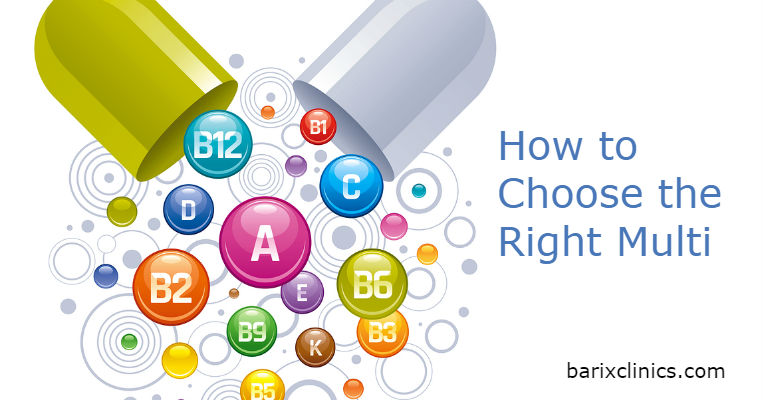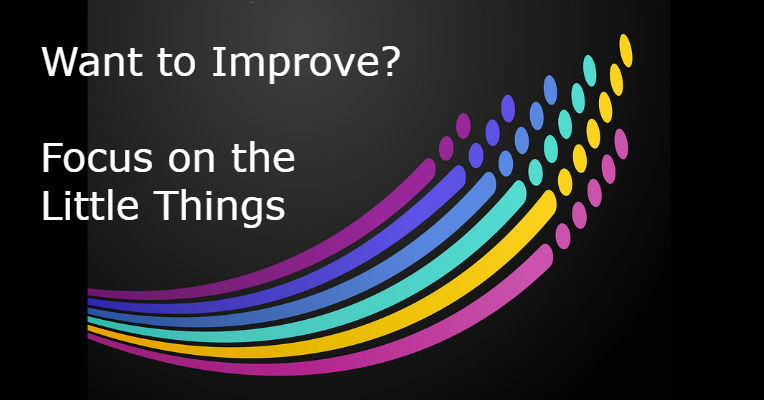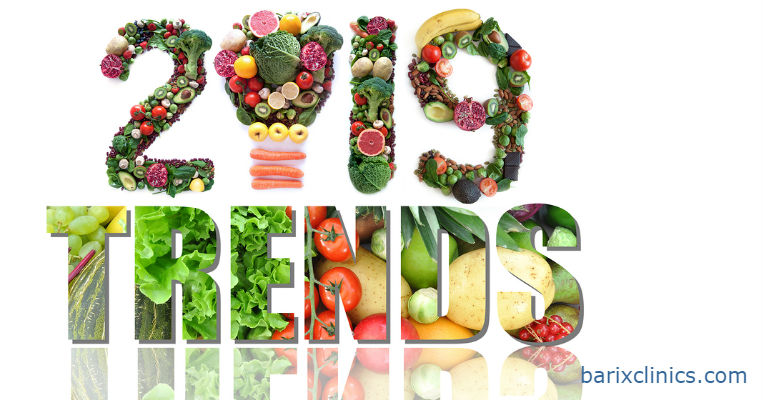Looking to Improve? Focus on the Little Things
When the decision is made to improve an area of our life–finding a new job, getting fit or becoming debt free, it is hard to be patient; we want to see results right away. We give it our best shot and make big efforts—sometimes attempting to make several big changes at once. When we don’t see results quickly, our tendency is to give up. That’s what happens to the vast majority of New Year’s resolutions—although our intent is strong, we are unable to sustain the required effort.
If we take a step back to look at the big picture and modify our expectations to a slower pace of change, we may just find that we have more success.
Download On Track with Barix: Looking to Improve? Focus on the Little Things
An isolated effort has little impact. When you make an isolated healthy choice, say eating a grilled chicken breast instead of loaded potato skins, the difference of a few hundred calories doesn’t really matter much. Your clothing doesn’t immediately get snug and the scale doesn’t jump 10 pounds the next morning. What happens when you make this healthy choice is you give up the joy of eating the potato skins without seeing any meaningful results. Same thing happens when you choose to hit the gym one day after work. You give up other things you could do with your time and one day of working out doesn’t give you buff biceps or tighten your jiggles in any perceptible way. If, in one instance, you put money into a savings account instead of buying something you’ve been wanting–you give up the pleasure of the purchase and the small deposit doesn’t change your financial life. In short, an isolated effort doesn’t make a meaningful impact on your health and wellness in that moment, but add in the concept of compounding and suddenly you can see how all of those small seemingly inconsequential efforts matter.
Here is how compounding works. As you make small isolated efforts today, and tomorrow, and the next day; the days turn into weeks, the weeks into months and the months into years and those choices compound. James Clear, in his book Atomic Habits: An Easy & Proven Way to Build Good Habits & Break Bad Ones, explains the compounding nature of our habits. He finds that small changes made consistently over time can make a huge impact. For example, as the graph illustrates, if you strive to improve one small area of your life by 1% every day for a year, at the end of the year, you’ll be 37 times better. That’s an impact!
Examples of the Compounding Effect. Let’s put this in some terms we can better relate to–Walking 10,000 steps a day is a good goal for many to shoot for. If you start with 2000 steps a day and add 1% more each day, you’ll be at 10,000 steps in less than half of a year.
It may be even more beneficial to look at the compounding effect of your health and wellness efforts in a different way—making a consistent and sustained effort over time. Here are some examples:
- If you’re already up for walking 10,000 steps a day you’ll find that the compounded benefit of this positive habit over the course of the year has the power to change your weight, keep your muscles strong and your joints flexible, enhance your cardiovascular fitness, reduce your risk of cancer, improve your mood, and really impact your life. Walking 10,000 steps a day = 3,650,000 steps a year and 18,250,000 steps in 5 years.
- Saving $5.00 per day = $1,825 a year and $9,125 in 5 years ($11,103 with 7% interest). That simple $5.00 a day savings—something most would not even miss, has the ability to amass a nice chunk of change when time is added to the equation.
- Cutting 100 calories a day = 36,500 per year and 182,500 in 5 years. So you went with a sugar-free popsicle instead of a dish of ice cream as a nightly treat, over the long haul, you save enough calories to lose 52# (For illustrative purposes only–our bodies are much more complex than this simple calculation).
- Do one good deed a day = 365 deeds per year and 1,825 deeds in 5 years. I wonder how you might change the world around you if you set out to do just one simple small good dead each day.
- Read for 20 minutes a day = 20 books per year and 100 books in 5 years. That’s like getting a PhD’s worth of education for a very small effort daily. Use audio books and the effort is even less.
Bad Habits Compound Too. If we are real, we will admit that there are days, weeks, months, and even years when we let some of our bad habits rule. Unfortunately, the same compounding effect works on our negative behaviors too. What if you choose to watch TV instead of walking, meal prepping, and other healthy pursuits for 2 hours a day? A study found that every hour of TV watching reduces your life expectancy by 22 minute. In a year, that TV watching reduces your life expectancy by 11 days and in 5 years you’ve lost 8 weeks of expected life. What is really scary is that the average person doesn’t watch 2 hours of TV a day, but almost 5 hours.
TV watching is just one example. How about going into debt by $5.00 a day? Eating a big bowl of ice cream each night? You get the idea. It’s important to shift away from the negative habits and put into place small positive habits that will compound over time.
Behavior change can be hard because the benefits of our positive behaviors and the costs of our poor behaviors are not immediately apparent. It is only over the expanse of time that the impact of the good and bad habits in our lives becomes clear.
Where to start. Changing big habits is hard. To change a habit, we have to sacrifice immediate enjoyment for results that are not visible for weeks, months or years. Making small changes that require small sacrifices—that’s doable. BJ Fogg, Director of the Persuasive Tech Lab at Stanford, has done extensive research on this very topic and developed the Fogg Method to create big changes in behavior using the effectiveness of tiny, specific habits. It is easy to commit to taking a 3 minute walk, reading for 5 minutes, or getting up 10 minutes earlier. Habits are behaviors that we repeat with little or no conscious effort. Once we get a basic habit in place, we can expand our effort level for greater impact.
Habits are formed by repetitive actions. Actions, thoughts or feelings that are reinforced over time eventually become automatic. Scientists have found that it can take anywhere from 18-254 days to form a new habit, with the average probably around 66 days. It’s probably safe to say the length of time to form a habit depends on the habit and the person. Plan to spend a couple of months working to make a change.
Pair behaviors. Pair the new habit you are trying to establish with something you already do consistently. This is going to vary based on your daily schedule, but here are some examples to consider:
- Take one deep breath (small behavior) after each email or phone call that you answer (established behavior).
- Do one squat (small behavior) after you brush your teeth (established behavior).
- Pack snacks (small behavior) for the next day after you put away dinner (established behavior).
- Meditate for one minute (small behavior) after you put your pajamas on (established behavior).
- Eat one small serving of vegetable (small behavior) with each of three meals (established behavior).
Track. Tracking your new habit will help it stay in the forefront of your mind so you can be more consistent—and consistency is key. Remember, these are small habits–your tracking method should be quick and easy. It can be as simple as a star on your refrigerator calendar when you’ve mastered the small behavior that day.
Think small. Rather than keeping your focus on the BIG goals that you want to reach, instead focus on those small daily behaviors that will get you where you want to go when you combine small consistent efforts with time. That’s how goals are met– little-by-little, day-by-day. You’ll feel empowered as you are able to incorporate small habits into your daily routine and build from there. Be encouraged…you don’t need to radically change your life to be successful—just make small changes consistently over time and watch what happens.
Roasted Chicken and Veggies
1 lb. sweet potato, cut into 1” pieces
1 head cauliflower, cut into 1” pieces
1 head broccoli, cut into 1” pieces
1 bell red, yellow or orange pepper, cut into 1” pieces
1 red onion, cut into 1” pieces
2# chicken breast, boneless and skinless cut into 1” pieces
¼ cup extra virgin olive oil
2 tsp garlic powder
2 tsp paprika
½ tsp salt
½ tsp ground black pepper
1 cup frozen corn, thawed
2 Tbsp. lime juice
¼ cup cilantro, chopped
Preheat oven to 425 degrees F. Line 2 large baking sheets with foil. Mix together sweet potatoes, cauliflower, broccoli, peppers, onion, chicken breast, olive oil, paprika, salt and pepper in a large bowl. Divide the chicken and vegetable mixture between the 2 pans. Bake for 25 minutes.
Sprinkle corn on top and return to oven to heat corn. Remove from oven and drizzle with lime juice and cilantro. Makes 8 servings.
Nutrition information per serving: 251 calories, 31 grams protein, 4 grams fat, 25 grams carbohydrate, 255 mg sodium.
Chicken Broccoli Casserole
1 cup quinoa
3 cups broccoli florets, finely chopped
6 Tbsp. chicken broth
3 boneless, skinless chicken breasts, sliced thin
1 Tbsp. all-purpose flour
1 cups 2% milk
¾ cup shredded cheddar cheese
Preheat oven to 350 degrees. Spray 9 x 13 pan with nonstick spray. In a large saucepan, cook quinoa according to package instructions; set aside. Steam broccoli until cooked through-about 5 minutes; set aside.
Heat 3 Tbsp. chicken broth in a large skillet over medium high heat. Add chicken breasts and cook 3-4 minutes per side or until cooked through. Remove from pan, cool, and dice into bite sized pieces.
Put the flour and milk into a tightly covered glass or container. Shake until well mixed without lumps. In the skillet, heat the remaining 3 Tbsp. chicken broth over medium heat. Gradually add in the milk/flour mixture, stirring constantly until slightly thickened, about 3-4 minutes. Stir in quinoa, broccoli, chicken, and cheese. Place in prepared pan and heat in oven for 5-7 minutes until lightly browned. Serve warm. Makes 8 servings.
Nutrition information per serving: 202 calories, 17 grams protein, 7 grams fat, 20 grams carbohydrate, 211 mg sodium.




